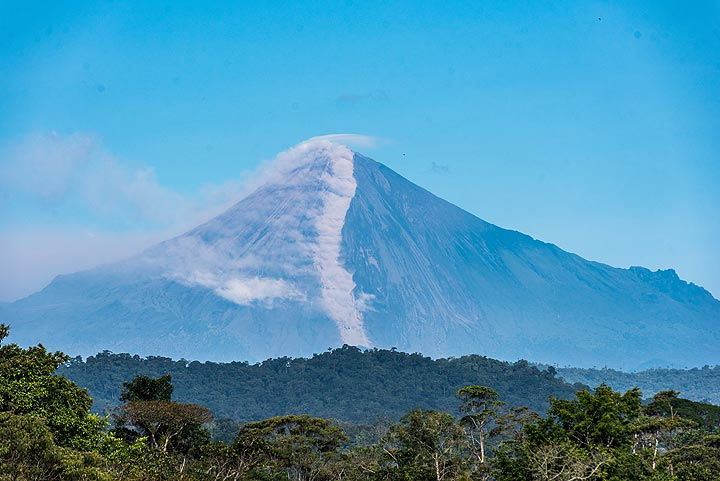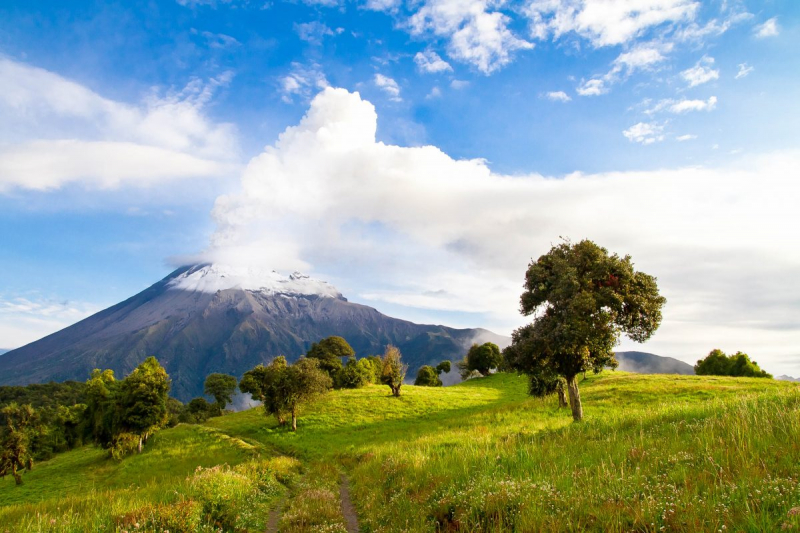Sangay

Sangay is an active stratovolcano in central Ecuador. It primarily exhibits strombolian activity. Sangay represents the southern edge of the Northern Volcanic Zone, and its location straddling two main chunks of crust explains its high degree of activity. Sangay's roughly 500,000-year history is one of instability; two prior forms of the mountain were destroyed in huge flank collapses, the remnants of which may still be found today.
Sangay has a significant ecological community due to its isolation, with wildlife such as the mountain tapir, gigantic otter, Andean cock-of-the-rock, and king vulture. Its biological community has been protected as part of the Sangay National Park since 1983. Despite its remoteness, severe weather conditions, river flooding, and the danger of falling ejecta, the volcano is regularly climbed, a feat first accomplished by Robert T. Moore in 1929.
To reach the summit, it might take up to a week of trekking through the rainforest, thus guided trips are required. It's important to remember that the peak – at a height of 17,159 ft above sea level – is not guaranteed to be reached owing to weather conditions.
MORE INFORMATION:
Elevation: 17159 ft
Location: Sangay, Ecuador











